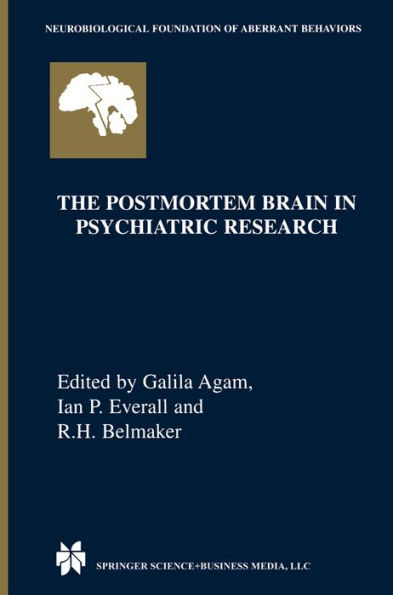Because of the dearth of experimental animal models of psychiatric disorders, the study of the effect of the disease state is only possible in tissue derived from patients vs. controls, especially in the target tissue of disease-related changes in the brain. The human postmortem brain offers the most appropriate experimental paradigm towards understanding the etiology of psychiatric disorders. The availability of post-mortem human samples from psychiatric patients and comparison groups in recent years has contributed prominently to the accumulating body of information leading to a better understanding of these disorders.
This is the first book to summarize this research approach and the meaningful data which has recently been acquired.
1100014386
This is the first book to summarize this research approach and the meaningful data which has recently been acquired.
The Postmortem Brain in Psychiatric Research
Because of the dearth of experimental animal models of psychiatric disorders, the study of the effect of the disease state is only possible in tissue derived from patients vs. controls, especially in the target tissue of disease-related changes in the brain. The human postmortem brain offers the most appropriate experimental paradigm towards understanding the etiology of psychiatric disorders. The availability of post-mortem human samples from psychiatric patients and comparison groups in recent years has contributed prominently to the accumulating body of information leading to a better understanding of these disorders.
This is the first book to summarize this research approach and the meaningful data which has recently been acquired.
This is the first book to summarize this research approach and the meaningful data which has recently been acquired.
119.49
In Stock
5
1

The Postmortem Brain in Psychiatric Research

The Postmortem Brain in Psychiatric Research
eBook (2002)
$119.49
$159.00
Save 25%
Current price is $119.49, Original price is $159. You Save 25%.
Related collections and offers
119.49
In Stock

Product Details
| ISBN-13: | 9781475736311 |
|---|---|
| Publisher: | Springer-Verlag New York, LLC |
| Publication date: | 03/09/2013 |
| Series: | Neurobiological Foundation of Aberrant Behaviors , #4 |
| Sold by: | Barnes & Noble |
| Format: | eBook |
| File size: | 9 MB |
From the B&N Reads Blog
